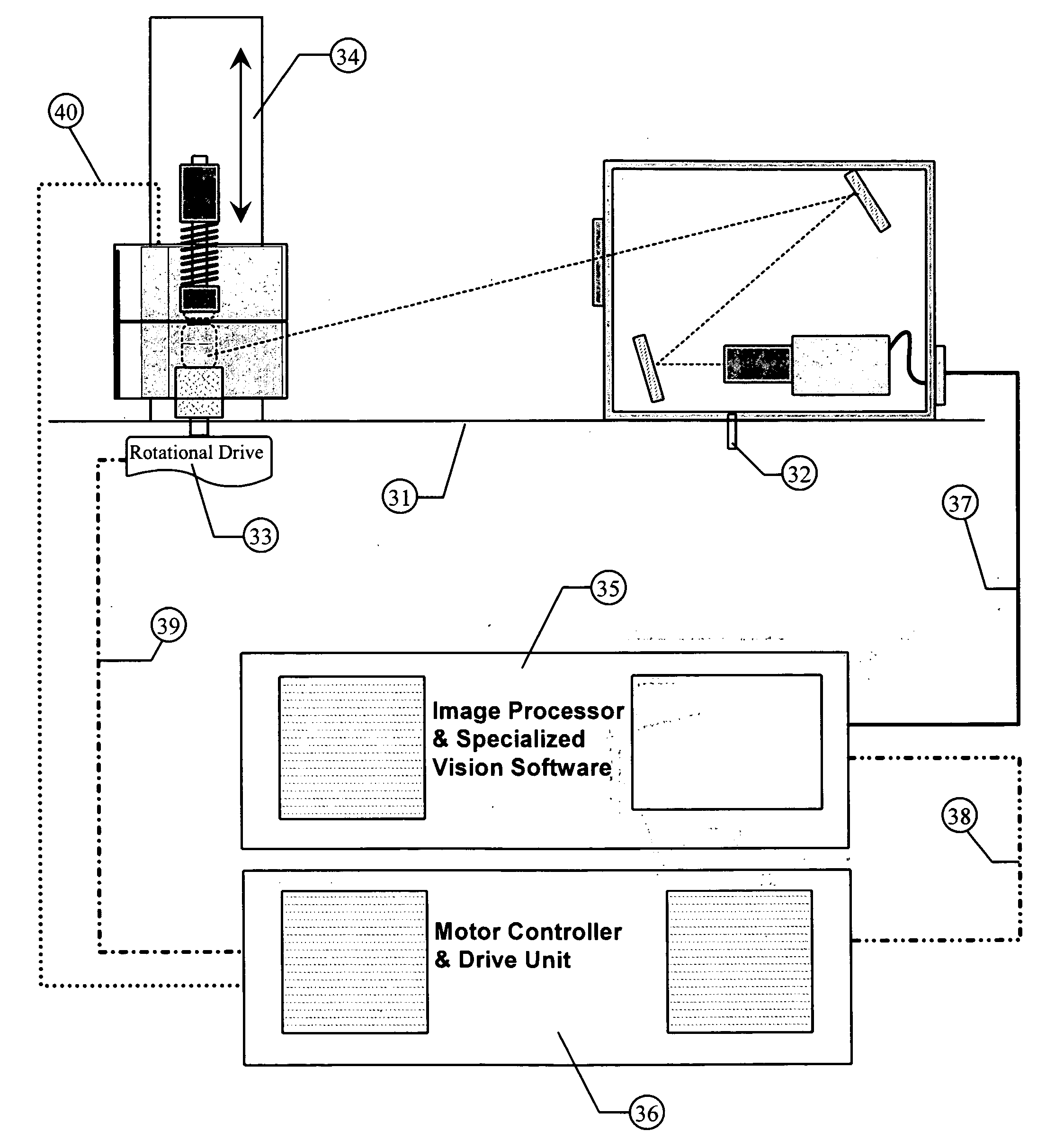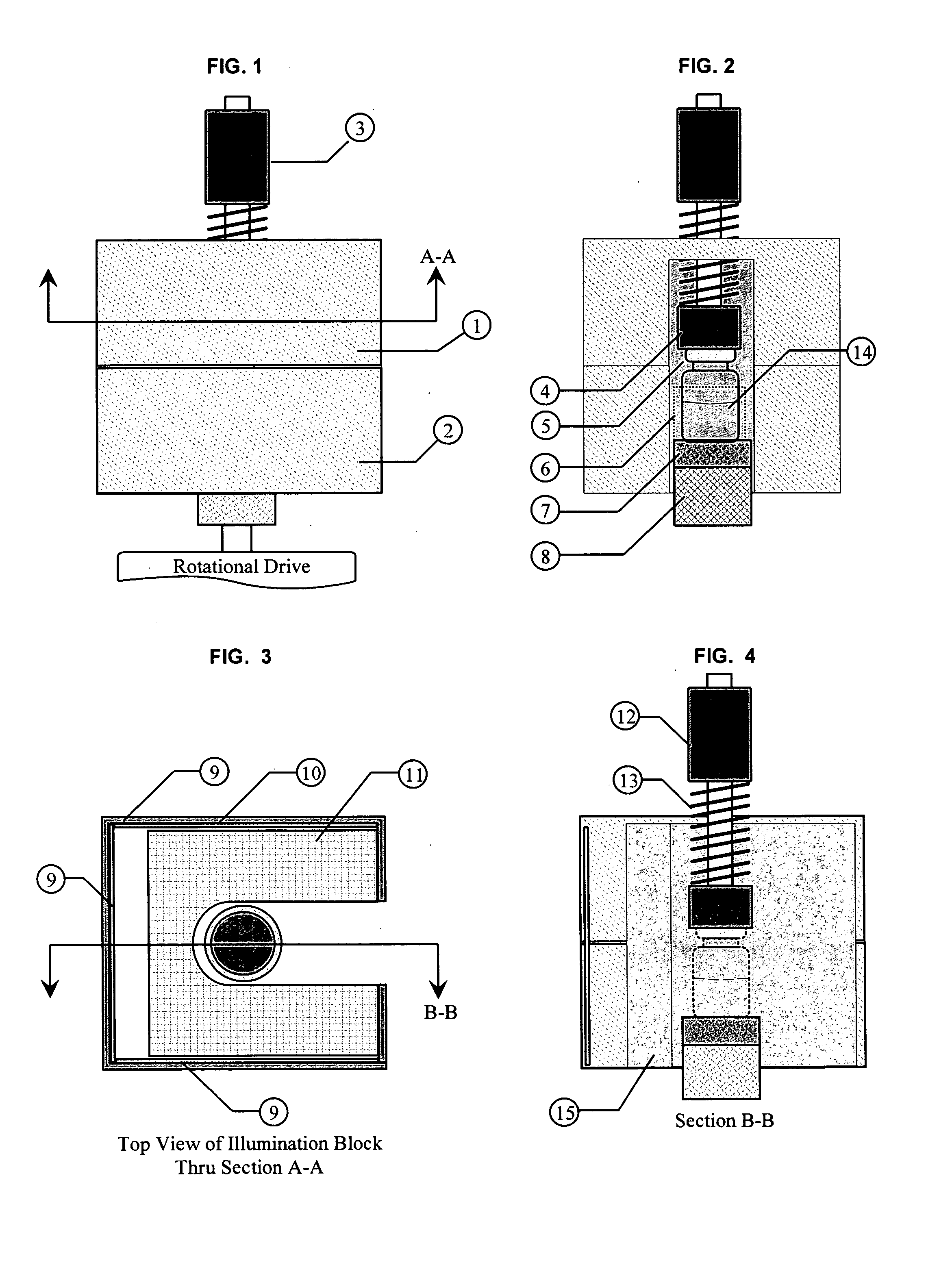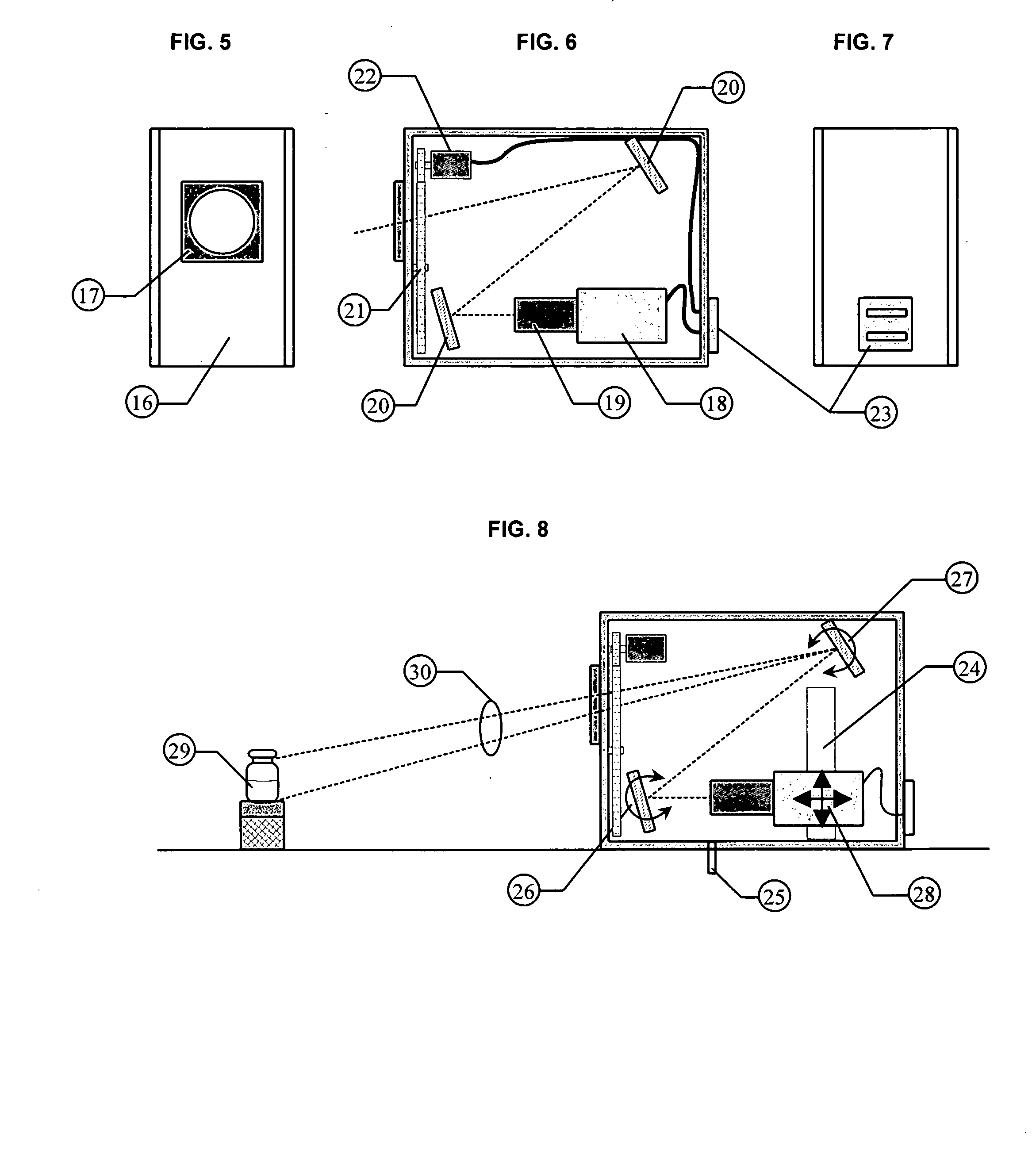NIST traceable automated visual inspection system for an inspection of particles in solution
a technology of automated visual inspection and particle solution, which is applied in the field of injectable pharmaceutical preparation inspection, can solve the problems of imposing additional costs on the quality assurance program, contaminating particle position in a container, and inspection is completely random, and achieves accurate measurement
- Summary
- Abstract
- Description
- Claims
- Application Information
AI Technical Summary
Benefits of technology
Problems solved by technology
Method used
Image
Examples
Embodiment Construction
[0046] The invention is a combination of three key components configured in the proper way to determine the maximum dimension of particles in solution. The key components are an Illumination Module, a Sensor Module, and an Image Processing System with specific software. The invention has offers several unique components that allow the particle to sized accurately. The invention has many uses but is designed primarily for the detection of contamination in clear solutions like those used in the pharmaceutical products.
[0047] The first key component is a unique illumination system designed to provide a very uniform background for the inspection of product in cylindrical vessels such as pharmaceutical vials. The illumination system is cube shaped with a channel slightly larger than the diameter of the vessel removed from the center, hereafter we shall reference to this system as the illumination module. The basic configuration is illustrated in FIG. 1. The cube is constructed using an ...
PUM
 Login to View More
Login to View More Abstract
Description
Claims
Application Information
 Login to View More
Login to View More - R&D
- Intellectual Property
- Life Sciences
- Materials
- Tech Scout
- Unparalleled Data Quality
- Higher Quality Content
- 60% Fewer Hallucinations
Browse by: Latest US Patents, China's latest patents, Technical Efficacy Thesaurus, Application Domain, Technology Topic, Popular Technical Reports.
© 2025 PatSnap. All rights reserved.Legal|Privacy policy|Modern Slavery Act Transparency Statement|Sitemap|About US| Contact US: help@patsnap.com



